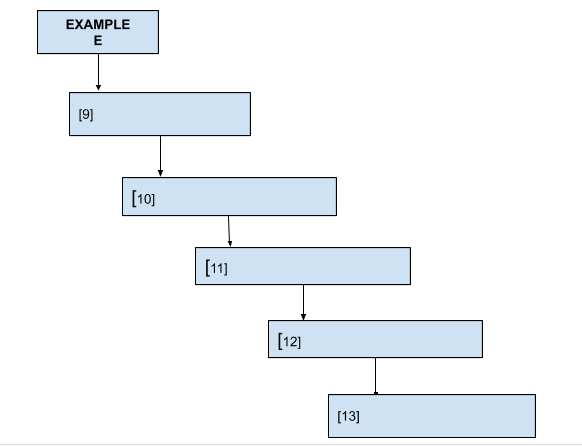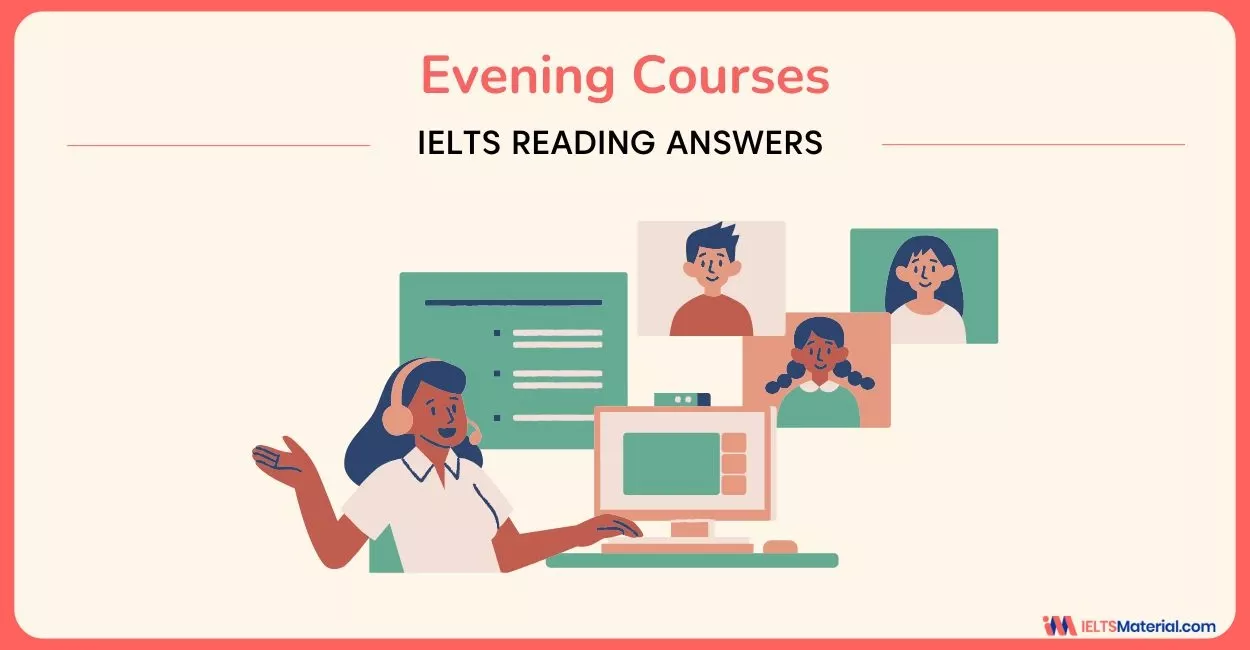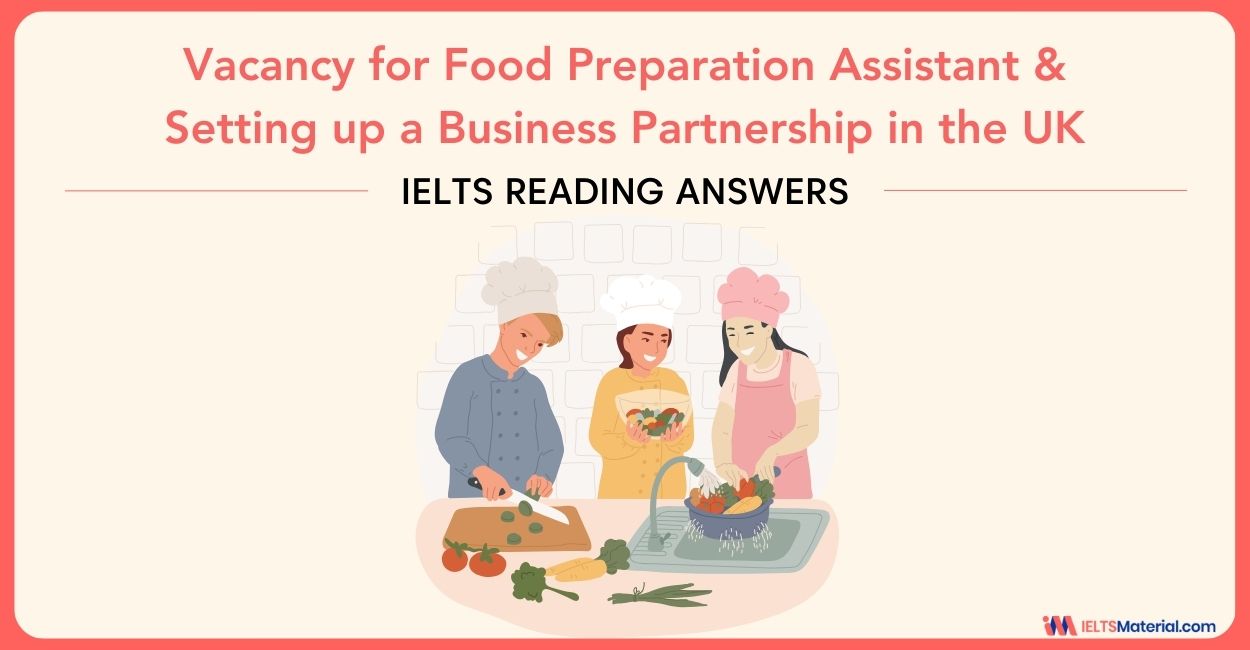Rice Cooker, Tall Ship Experience and Seadragon Search | IELTS General Reading Practice Test 6 with Answers
13 min read
Updated On
-
Copy link
Get familiarised with the IELTS Reading exam pattern with the Rice Cooker, Tall Ship Experience and Seadragon Search | IELTS General Reading Practice Test 6 with Answers. Practice and get a band score in real time!
Table of Contents

Limited-Time Offer : Access a FREE 10-Day IELTS Study Plan!
The IELTS Reading can be the top-scoring category, with diligent practice. To achieve the best results in this section, you must understand how to approach and answer the different Question types in the Reading Module. By solving the reading practice tests and reviewing Sample Reading Questions from past IELTS papers, you can ensure that your Reading skills are up to the mark.
If you are willing to enhance your reading skills with more practice, you have come to the right place. To help you in your preparation journey, we’ve created IELTS General Reading Practice Tests like Rice Cooker, Tall Ship Experience and Seadragon Search so that you can improve your language abilities by simulating the actual test by presenting you with questions that have previously appeared on the test.
Reading passage 1
Questions 1- 14
Read the information and answer questions 1- 3 below
Rice Cooker
If you are a student living on your own, a rice cooker is one of the most practical and convenient kitchen appliances you can buy. It is relatively inexpensive and produces perfect rice every time, ready when you are. You can steam your vegetables while the rice is cooking. Healthy eating has never been easier. There are many different types of rice cookers available. Here are some of the features to look for when purchasing yours.
Desirable features
- Glass lid – so you can see what’s happening inside
- Hole in the lid – for steam to escape (otherwise it comes out of the edges of the lid and is messier)
- Steamer Tray – for steaming vegetables and other foods ( though you can make do with a fold up one from the grocery store)
- Removable cord – for easy storage
- Non-stick pan – Very important
- Measuring lines – on the inside of the rice cooker so you can add water without using a measuring cup. You still need a cup to measure rice however.
Questions 1-3
Match each rice cooker feature with the accurate description from the list (A-G).
1 Non-stick interior surface ………………………….
2 Detachable power lead and plug ………………………….
3 Indicators for measuring ………………………….
List of Descriptions
- to show how much rice to add
- to hold vegetables for cooking
- to make storage more convenient
- to make cleaning easier required
- to help to release pressure
- to look inside without opening lid
- to show the amount of water
Read the reviews and answer the question 4-8
Rice Cooker Reviews
Rice Cooker A
10 cup, 700 watts, $25.99. This one takes up a lot of room because it has 2 big steamer racks. It is great when you want to cook your whole meal in the rice cooker. It has a glass lid with a hole and an attached cord but doesn’t show measuring lines.
Rice Cooker B
10 cup, 700 watts, $39.99. This is a fancy looking, chrome appliance with a flimsy metal lid. There is a steam hole but no measuring lines. It has a good, stainless steel, steamer tray, which sits at the top of the pan and nests inside for storage. It has a removable cord.
Rice Cooker C
1 cup, 500 watts, $29.99. This is the smallest one. It has a glass lid with a hole and is a good size for a small family. The only objection is that it doesn’t come with a steamer tray. It has a sturdy, removable cord.
Rice Cooker D
2 cup, 600 watts, $29.99. This one has a glass lid but no steam hole. It has a sturdy steamer tray which sits on the bottom of the rice cooker pan – less practical than the ones that sit in the top of the cooker, it has a removable cord.
Questions 4-8
Which is the letter of the rice cooker (A-D) which matches each description below.
4 Has a glass cover without a vent in the middle……………………….
5 Has a cord that is fixed to the cooker……………………….
6 Doesn’t have a glass top……………………….
7 Has a steamer located beneath the rice cooker……………………….
8 Has the most space for steaming vegetables……………………….
Read the text below and answer questions 9-14.
How Does A Rice Cooker Know When To Turn Itself Off?
There are a number of appliances that “know” when they should turn off. A rice cooker is one of them. The water-heating portion of a drip coffee maker (as opposed to the burner under the pot) is another. Automatic egg boilers work in the same way. All of these appliances use the same principle. If there is water in a heated container and the water is boiling, the container will maintain a constant temperature.
At sea level, the boiling temperature of water is 212 degrees Fahrenheit or 100 degrees celsius. As soon as all of the liquid water has evaporated ( or, in the case of the rice cooker, as soon as all of the water is absorbed by the rice), the temperature inside the container immediately rises. There is a thermostat in the appliance. When the thermostat detects that the temperature in the container has risen above 212, it turns itself off.
Questions 9-13

A All water evaporates from the cooker.
B Temperature increases beyond the boiling point,
C Temperature in the cooker remains constant.
D Thermostat shuts off heat.
E Rice and water added to the cooker. EXAMPLE
F Temperature in the cooker rises to boiling point.
Question 14
Answer the question using NO MORE THAN THREE WORDS FROM THE PASSAGE.
14 Name one appliance that works in a similar way to the rice cooker. ———
Also check :
Reading Passage 2
Questions 15- 28
Read the course information below and answer questions 15 – 20
Tall Ship Experience
Ocean Study Semester
If you are looking for an educational adventure in a study abroad program, you won’t find anything similar anywhere in the world. This program takes college students to the deep ocean on a traditional sail ship sailing vessel to learn about the sea.
You may be excited at first by the opportunity to visit exotic ports like Tahiti, Hawaii, Martinique or Grenada. But if you talk to students who have experienced the program, many will tell you that the most exciting destination of all is the sea itself, and the most interesting discovery is learning what lies within you. Perhaps, you want to have an international experience; perhaps you are intrigued that the world is mostly water and you want to know more about how the oceans work. Perhaps you want to understand how we are ONE world, land and sea, connected to our past and to each other. Perhaps you just want to do something very, very thrilling and different from what others are doing. If any of these are true, this could be the experience for you.
By participating in the program, you can get a semester’s credit for a 12-week program that takes place half on shore and half at sea. The interdisciplinary program begins in our centre for ocean research. Here you will study the chemistry, biology, physics and geology of the oceans and you will design your own research project that you will carry out at sea. You will learn the culture, history and traditions of life at sea. You will discuss major policy issues that will be tomorrow’s headlines. And you will learn what it requires to take a vessel under sail safety to the deep ocean and to international ports.
After six weeks on shore, you will be prepared and eager to go to the sea. You and your classmates will join one of our vessels, either in the Atlantic/Carribean or in the Pacific. Is this for you? Only you can tell. Our students are diverse. Some are Science majors but just as many come from the liberal arts. Students come from diverse colleges around the country and from abroad.
What do our students have in common? They are bright. They have a sense of adventure. They are willing to work hard. They welcome a unique experience. They love a challenge. They like people and want to be part of a community unlike any they have experienced before.
Questions 15-19
Do the following statements agree with the information in the passage?
Write:
YES if the answer is *yes’
NO if the answer is ‘no’
NOT GIVEN if there is no information about this in the passage
15 Are there exams at the end of the first part of the program?
16 Will the sailing part of the program last for 6 weeks?
17 Do I have to be enrolled in a science program to participate?
18 Do I get to sail on the ship of my choice?
19 Are international students eligible to apply?
Question 20
Answer the following using NO MORE THAN TWO WORDS FROM THE PASSAGE
20 What are the students expected to complete while at sea?
Read the course information below and answer questions 21 – 28.
Life on Board
Day-to-day operation of the ship is governed by the three colour watch system ( red, white and blue) typically used on naval vessels. Each watch is 4 hours long proceeding in sequence 24 hours a day. To rotate the watches, there are two shorter 2-hour watches in the afternoon.
Eight students are assigned to each watch and report to one of the three junior officers who in return report to the three watch officers. They report to the first mate, who reports to the captain. The Swiftsure and Fairwind each carry a full time cook and an officer in charge of maintenance and repairs at sea.
As a crew member you will sleep in the lower deck quarters. Since one third of the crew will be awake and on deck while on watch, the bunks are shared with other students. While on watch your duties will include working and changing sails, steering, acting as lookout and handling lines as the ship comes alongside or puts to sea.
Life on board is not all duties, however. Every day is a surprise and depending on the weather and wind, other activities may include swimming and a variety of games only possible on a tall ship.
When off-watch some duties include assisting the cook in meal preparation and clean up, performing maintenance duties and managing sails where required. There will also be times when you will receive direct training in sailing and seamanship. When the ship is at anchor, night time watch service is usually shortened to 1 hour 20 minutes with students staying awake in pairs. While in port, students who are not on watch may be given shore leave where they are free to explore the port of call.
Questions 21-23
Choose the correct answer A-D.
21 How many staff and officers (including the captain) serve on each ship?
A three
B five
Cseven
D ten
22 How many students does each ship carry?
A 8
B 16
C 24
D 32
23 When is the watch duty time reduced?
A every night
B every other afternoon
C on the weekend
D at night in port
Questions 24-28
Using NO MORE THAN TWO WORDS FROM THE PASSAGE complete the following:
To qualify for the program, students have to be able to 24…………………..
after completing a swim of one hundred metres.
There is not enough space even to bring framed backpacks or 25…………………..
Students share sleeping quarters, so one group remains awake and 26 ……………..
at night while the others sleep.
Duties include climbing the rigging to set and change 27………………….and as 28………………….from the crow’s nest at the top of the mast.
Reading Passage 3
Questions 29-41
Read the passage below and answer the questions that follow
Seadragon Search
In appearance, they are unmistakably dragons, but in other ways these delicate creatures of the sea bear little resemblance to their fierce, mythical namesake. They are only 45 cm long, fragile, harmless and vulnerable. Belonging to the same family as seahorses, seadragons come in two different species: ‘weedy’ (resembling blades of brown seaweed) and the more showy and more endangered ‘leafy’ (looking like aquatic leaves). They are found only in coastal southern Australian waters and because they resemble swaying seaweed can be difficult to find in their natural habitat.
Though well camouflaged, their brilliant colours are visible in sun-dappled waters. Both species inhabit rocky reefs, seaweed beds and seagrass meadows colonised by seaweed. They are most often seen in shallow coastal waters. Camouflage is their only protection. Otherwise, sea dragons are poorly equipped for fleeing from pursuers. Their outer skin is composed of solid bony plates, which limit mobility. The only way they can propel themselves along is through rapidly oscillating their ventral and dorsal fins. Like seahorses they possess an internal air bladder, used for vertical motion. With little effort, they can rise or settle to another depth simply by changing the air volume within the bladder. Because they blend easily with the background, sea dragons are agile enough to hunt down tiny shrimps, their main quarry.
Perhaps, the most extraordinary thing about sea dragons is that it is actually the male of the species which carries the young. During mating, the female lays 100-250 eggs onto the underside of the male’s tail, where they are attached and fertilized. After a period of about four to six weeks from conception the male gives birth to miniature juvenile versions of itself. As soon as a baby sea dragon leaves the safety of its father’s tail, it is independent and receives no further help from its parents.
There is increasing concern about the future of these vulnerable and fragile creatures. Both sea dragons and their close relatives, sea horses, are threatened globally by habitat destruction. The inshore areas of seagrass they inhabit are threatened by pollution and excessive fertiliser runoff. Each year, an estimated 20 million seahorses ( but not sea dragons) are taken for traditional Asian medicines. The international trade in seahorses involves more than 30 countries and is growing. Fortunately, sea dragons are currently not used for the medicine trade; however they have been targeted by the aquarium fish trade. Unscrupulous ‘collectors’ have denuded the more accessible sea grass areas of this amazing creature.
Keeping live sea dragons is extremely difficult and collectors often target males with eggs, hatching out and selling the young. Removing breeding animals from the wild populations may have an impact on local populations of sea dragons. To date, no successful closed cycle captive breeding program has occurred. There has not yet been a generation of captive sea dragons which has bred. Economically and environmentally it makes sense to limit collection and export of this species until more is known about them. Because sea dragons require live food and an exact water temperature, most die quickly in captivity. It is illegal to take or export them without a permit. Concerned by the rapidly decreasing numbers of the sea dragon, the department of fisheries declared it a totally protected species in 1991.
It is for these reasons that Dragon search has been initiated. The community based monitoring programs involve nearly 20 organizations around Australia. The project encourages members of the community to provide information on sea dragon sightings. Recreational divers and snorkelers are invited to record sightings of sea dragons in their dive logs and to transfer relevant information to Dragon search sighting sheets. Likewise, anyone who visits the beach and spots either live sea dragons in water or their remains washed up on shore may also participate. The information submitted is entered into a confidential database and is used to encourage the protection of these wonderful creatures and to promote the establishment of marine reserves. It is hoped that increased awareness and involvement of local communities will help prevent poaching of sea dragons and encourage the protection of both species and their habitat.
Questions 29-34
Look at the following statements.
Write:
TRUE if the statement is true according to the passage
FALSE if the statement is false according to the passage
NOT GIVEN if there is no information about this in the passage
29 Seadragons are found all around the Australian coast.
30 Weedy seadragons are more common than leafy seadragons.
31 Body armour gives seadragons effective protection from predators.
32 The air bladder enables seadragons to move with great speed.
33 Eggs are laid by the male seadragon.
34 The male and female stay together to look after the eggs.
Questions 35-39
Choose the correct letter A-D.
35 Which of the following is NOT a threat to the survival of seadragons?
A habitat destruction
B difficulty of breeding in captivity
C use in Chinese medicine
D the aquarium trade
36 Seadragons do NOT do well in captivity because…
A they require warm water.
B they are difficult to catch without injury.
C they die quickly when stressed.
Dthey only eat live food.
37 Breeding of captive seadragons has been..
A against the law.
B unsuccessful.
C limited.
D a growing industry.
38 It is illegal to…
A capture leafy seadragons.
B trade in seadragons.
C keep seadragons in aquariums.
D export seadragons.
39 One purpose of Dragon Search is…
A to capture live seadragons.
B to help divers locate seadragons.
C to move seadragons to safer areas.
D to increase public awareness of seadragons.
Questions 40
Answer the following using NO MORE THAN TWO WORDS FROM THE PASSAGE.
40 What can public involvement in Dragon Search help to stop?
Answer Key
Unlock Answer
Signup/Login and get access to the answers
Reading Passage 1
| 1 | D |
| 2 | C |
| 3 | G |
| 4 | D |
| 5 | A |
| 6 | B |
| 7 | D |
| 8 | A |
| 9 | F |
| 10 | C |
| 11 | A |
| 12 | B |
| 13 | D |
| 14 | (drip) coffee maker/
(automatic) egg boiler(s) |
Reading Passage 2
| 15 | Not Given |
| 16 | Yes |
| 17 | No |
| 18 | Not Given |
| 19 | Yes |
| 20 | research project |
| 21 | D |
| 22 | C |
| 23 | D |
| 24 | tread water |
| 25 | suitcase(s) |
| 26 | on watch/on deck |
| 27 | sails |
| 28 | Lookout |
Reading Passage 3
| 29 | No |
| 30 | Yes |
| 31 | No |
| 32 | No |
| 33 | No |
| 34 | Not Given |
| 35 | C |
| 36 | D |
| 37 | B |
| 38 | A |
| 39 | D |
| 40 | poaching (seadragons) |

Start Preparing for IELTS: Get Your 10-Day Study Plan Today!
General Reading Practice Tests


Nehasri Ravishenbagam

Kasturika Samanta

Nehasri Ravishenbagam
Recent Articles

Kasturika Samanta

Kasturika Samanta


Kasturika Samanta




Post your Comments